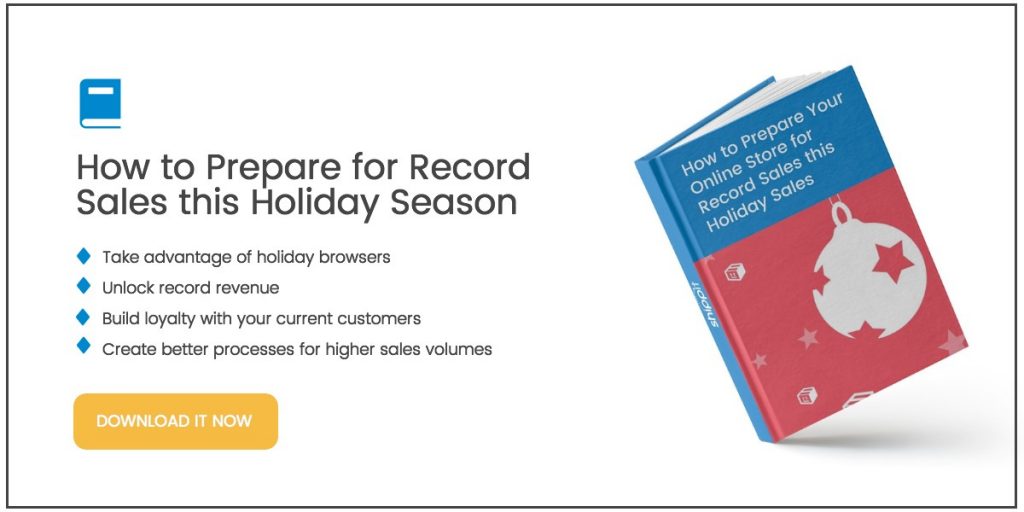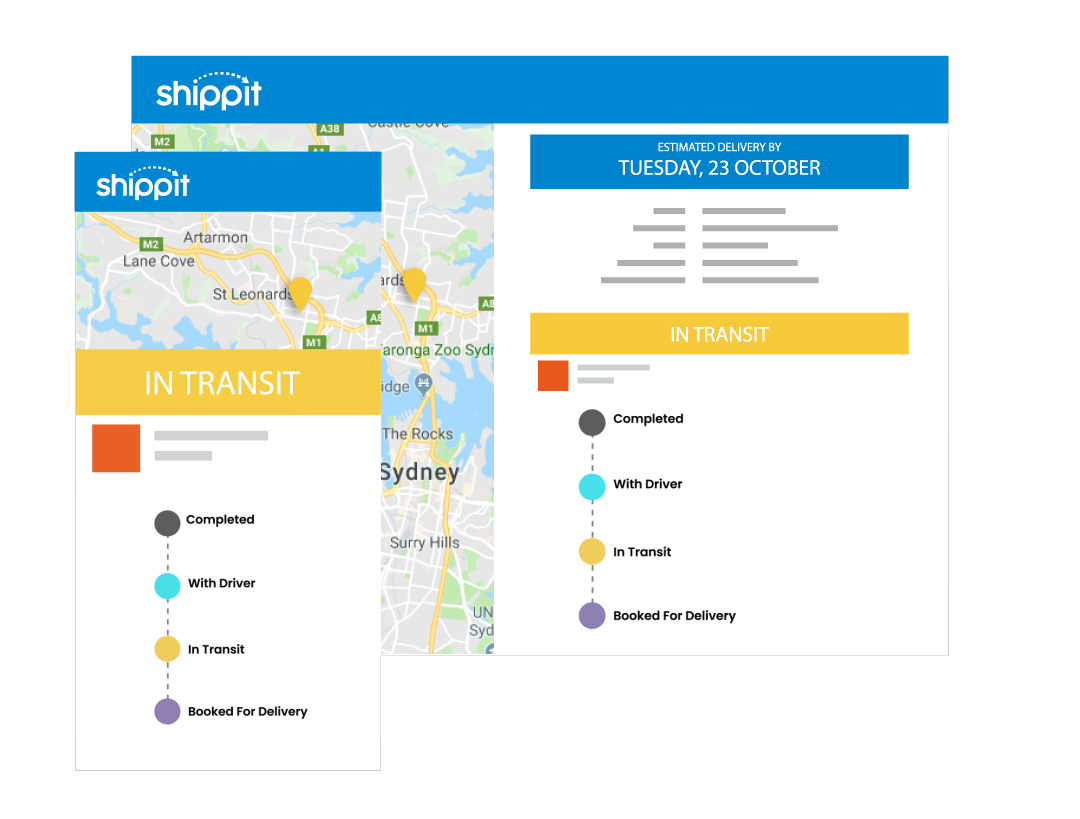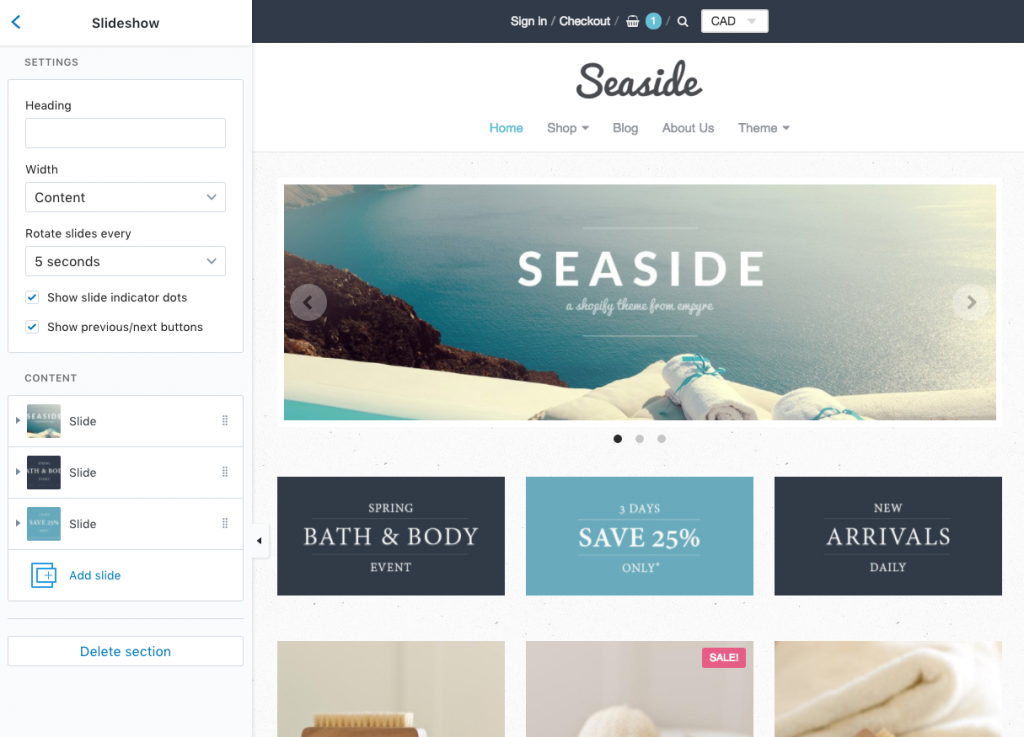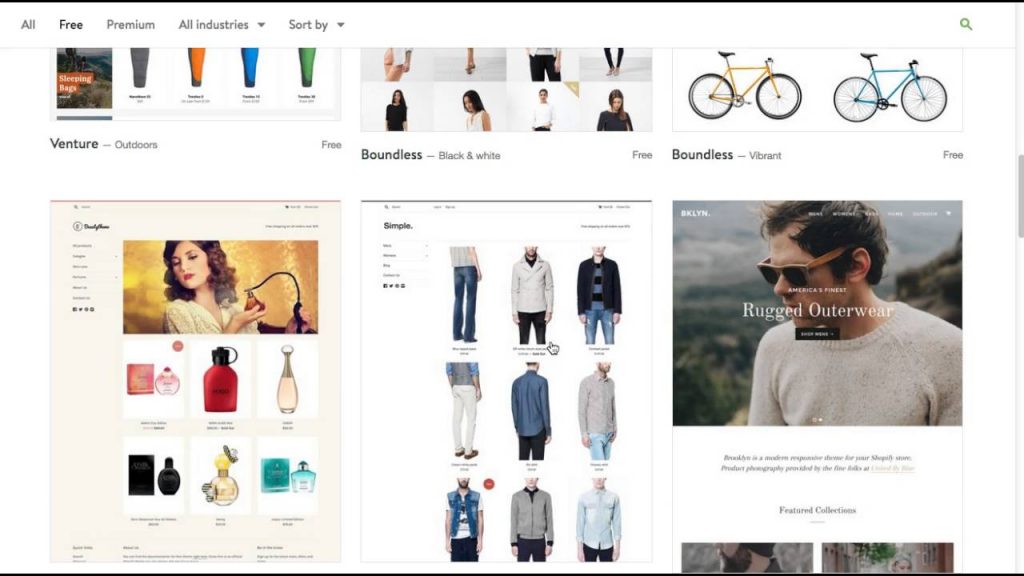If you’re shopping around for an eCommerce platform, you may have come across the usual suspects: Shopify, BigCommerce, Magento and WooCommerce. While there are many more eCommerce platforms on the market, these are the most widely recognised. To help you get your head around the Shopify, we’re digging deeper to explain what Shopify does, how it works, and why it may work for you.
Shopify describes itself as the ‘the eCommerce platform made for you.’ Whether you sell online, on social media, in-store, or out of the trunk of your car, they claim to have you covered. Marketing-speak aside, Shopify is a flexible, customisable, hosted eCommerce platform which helps you sell online, anytime and anywhere.
Shopify Building Blocks
Whether you’re transitioning your hobby into a business, beginning a new one, turning your part-time hustle into a full-time business, or scaling your current eCommerce business, Shopify has a solution.
Packed with features to suit both beginners and eCommerce experts, Shopify is completely customisable, combining your website, eCommerce store and blog into one. With unlimited bandwidth, product inventory, and customer data, Shopify is home to over 600,000 businesses and has over 1,000,000 active users. This makes it one of the biggest and brightest eCommerce platforms on the web.
Because we live in an always-on world, Shopify support is available 24/7, meaning there’s always someone around to assist you with your stuck points. To help you get a grip on where Shopify stands out, here’s what you need to know.
On the surface, Shopify is geared towards entrepreneurs and small businesses. However, at an enterprise level, ‘Shopify Plus’ offers big businesses a robust solution packed with advanced features regarding security, APIs and fulfilment.
Getting Up and Running
Shopify is classified as a Saas (software as a service) tool which means you pay a monthly or annual fee to use it. The amount you pay depends on the size of your store and the features you need. The main advantage of using a saas platform is that you can access it from anywhere with an internet connection, and you don’t have to worry about servers or hosting.
If you don’t already have a domain name, you can register one through Shopify using their automated setup feature, or you can use an existing domain name.
Because hosting is included when you set up your eCommerce website, you don’t need to worry about software upgrades, web safety or compliance. For small businesses and eCommerce retailers who are not tech-savvy, this is a major plus.
Another major bonus for digital nomads is the mobile app which lets you manage your business using your smartphone. From within an app, you can upload product photos and add products to collections, process your orders, print shipping labels and get access to real-time sales data. Read more instructions on getting started with Shopify here.
Themes
This is where Shopify leads the pack. While they do offer a handful of free templates, the real standout is the Shopify Theme Store. Within the store, you can choose from a range of stylish and customisable templates that can be used to sell either physical or digital goods.
With over 100 premium and a handful of free eCommerce templates, there’s a design to suit clothing and fashion, jewellery, electronics, art and photography, and a whole host of eCommerce sites.
One of the main selling points of Shopify is that users with little design or technical skill can create a professional looking, responsive store without the need for a developer or web design agency. Because Shopify gives you 100% control over the design and HTML/CSS, you can edit your template to suit your style and needs.
If you’re looking for something a little more custom, and don’t have the skills or time to DIY, Shopify has an online directory of eCommerce designers and developers to help with the task.
Compared to other eCommerce platforms like BigCommerce or Magento, Shopify’s professionally designed templates trump its competitors by a country mile.
Top tip: When considering a theme, make sure Shopify officially supports it. If you purchase a theme, you might need to contact a third-party developer for support.
Customer Acquisition and Retention
When it comes to digital marketing, it’s essential your eCommerce platform offers top-notch Search Engine Optimisation (SEO) tools which allows customisable H1, title and meta tags. It also automatically generates sitemaps.xml files, so new products and site changes show up quickly on search engines. Although you can customise your URLs so they contain keywords, Shopify adds a prefix to the pages. This means the URL tends to end up a little longer which can affect how your pages show in search results. It’s by no means a deal-breaker because the SEO features in Shopify are strong.
SEO aside, the Shopify platform includes built-in analytics that gives you an instant overview of your websites progress. Using data, you can see how your customers found you, where they came from, and what search terms they used to find you. You can also find out what URLs are referring to your online store to gauge your marketing efforts and track the amount of traffic your store is getting.
Seamless integration with Google Analytics means you can track your eCommerce transactions and keep an eye on your data.
In terms of customer retention, the built-in coupon code generator means you can easily create discount codes and coupons to help promote your products. You can define coupon codes that save customers a fixed amount, a percentage amount, or free shipping. You can also keep track of customers that subscribe to your newsletter and integrate that into your email platform of choice.
Social Selling
Because we’re well and truly in an omnichannel environment, selling online through your website alone isn’t enough.
Shopify automatically feeds your inventory and product data into Google Shopping and Product Search. Another bonus is the fully-integrated Facebook store which lets customers browse your products and collections via the Shop section on your Facebook Page. You can also use Facebook Messenger to chat and connect with your customers and feed through order updates in real time.
Other sales avenues include seamless integration with eBay, Amazon and Shopify’s built-in Point of Sale solution.

Shipping and Returns
One of the main reasons online shoppers abandon their carts is limited shipping options. Integrating with a platform like Shippit takes the guesswork and manual labour out of customised shipping options. Through the app, you can seamlessly offer multiple shipping options like standard and 3-hour delivery, right there at the checkout, without manual configuration. Print pack slips, labels or both for hundreds of orders with just a couple of clicks. Once packed, labelled and ready to ship, one click will mark your orders as fulfilled in Shopify and copy across vital tracking information, so your customers are informed right from dispatch.
The Shippit Shopify plugin will help you close more sales by giving your customers more flexible shipping options including standard, express and same-day delivery time slots. Save time and money by fulfilling and tracking orders anywhere you are, anytime you like. With Shippit, you can streamline packing and shipping decisions so you can focus on doing what you love.
To find out how Shippit can take a headache out of fulfilling orders, click here.



